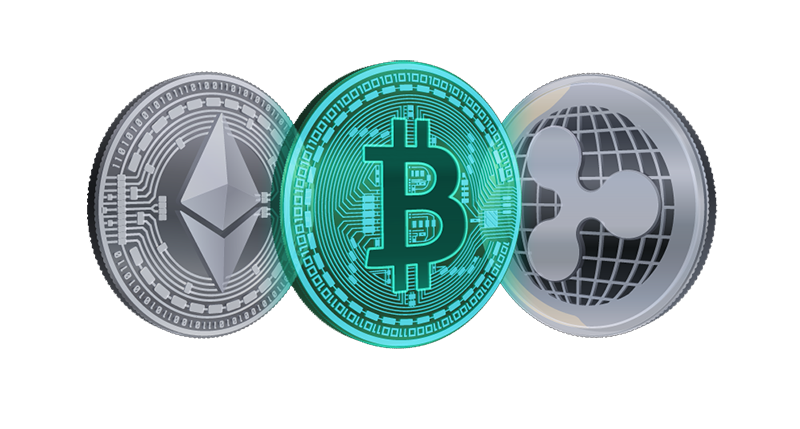MiCA is not relevant for my company.
Or is it?
A brief guide to the crypto industry:
how to decide whether you fall
under the scope of MiCA
Part I.
The European Union’s Market in Crypto-asset Regulation (`MiCA`) was preceded by long legislative efforts to create a comprehensive system of regulation to finally conclude the unresolved issues of crypto industry in Europe. The regulations were adopted in June 2023 and the final text was made public, revealing the document’s strengths, weaknesses, and aspirations. Given that these regulations cannot be called light reading – they are more than a hundred pages long – they have been giving the crypto industry a hard time. But does the length really indicate the excellence of the content? Is it possible to cover the entirety of such a large market with a single set of regulations? What if they cover your company when you might think at first that they don’t?
Is the EU a pioneer or rather blocking innovation?
MiCA entered into force on 29 June 2023, and changed the way crypto-assets are to be treated in the EU forever. According to the text:
will be applicable from June 2024,
While:
- Title I (Subject matter, scope, and definitions),
- Title II (Crypto-assets other than asset-referenced tokens or e-money tokens),
- Title V (Authorization and operating conditions for crypto-asset service providers),
- Title VI (Prevention and prohibition of market abuse involving crypto-assets), and
- Title VII (Competent authorities, EBA and ESMA)
will be applicable from December 2024.
In the following we provide a brief guideline for you in determining whether or not your particular business is covered by the new regulation and will therefore need new arrangements over the course of 2024. Since we have already started the preparations with our own clients for the transition to the new regulatory era, we are going to unravel the tangle of interpretative difficulties posed by MiCA by initially breaking down the material, territorial, and personal scope into manageable chunks.
Has the EU made a bold move here? Although some might not see it that way, one thing is pretty much beyond doubt: the European Union took on a major task in its recent attempt at crypto-asset regulation. Since there have not been many attempts to provide uniform regulation of crypto in its global history to date, the EU is among the first legislators to come up with a comprehensive framework for the industry.
Although many realized quite early on the changes crypto-assets would bring to traditional financial practices, the solution has been a long time coming. MiCA itself has been in the making for quite some time – the first proposal came out in 2019, following a lot of background work and research – but even in its finalized form, to the shock of many it seems, the real work is only just about to begin. Nevertheless, the fact that the legislation is actually ready is a significant milestone in the effort to regulate this market on a global scale. According to Bruno Le Maire the French Minister for the Economy, Finance and Industrial and Digital Sovereignty: “This landmark regulation will put an end to the crypto wild west and confirms the EU’s role as a standard-setter for digital topics.”

Since the advent of cryptos, or indeed any of the new technologies, the question has been the same: will this innovation stand the test of time, or is this just another gadget that will fade into obscurity after a few decades? This conundrum has also shaped the general global approach to crypto-assets: is it necessary to regulate it or is it wiser to influence its existence only indirectly and let things go unsupervised? With the introduction of MiCA, the EU has clearly taken a stance on the former, in the face of the regulation-averse attitude of the USA.
Is the EU right in the approach it has chosen?
Many think that regulating a sector of this sort is a mistake. It is true, that the introduction of new rules is likely to hinder the administered market in one or two aspects initially. Setting up a timeline one must follow or making it harder to access specific authorizations could result in entities leaving the European market in search of less strict conditions. That could mean that the USA is up to win another economic race and the EU is about to lose its position on the global industry map of crypto-assets.
But does it, really? 
In practice we have seen the types of obstacles that new regulations create tend to be temporary. If we take in the longer-term perspective, the benefits of market stability usually outnumber the losses that the actual market potentially suffers in the interim period in which the globally unbalanced situation and radically varying international legal landscapes can lead to regulatory arbitrage. Furthermore, it also seems evident, that a lack of legal certainty can result in a less innovative milieu. Jacques Pelkmans and Andrea Renda argue in their study ‘How can EU Legislation Enable and/or Disable Innovation’ that regulation acts as a stimulus both to the will to innovate and to each of the phases of the innovation cycle. The uncertainty of the legal background makes it harder to act because you don’t know the rules of the game you are playing. Also, regulation acts as quasi-proof to the world that the technology it has as its subject is worth the time it takes to create standards revolving around it, which is a strong signal and clarification that that the technology in question is here to stay. On the other hand, many market players do not like the rules to bet set out for them. This is a typical Sisyphean task, making the job of a tech lawyer even more difficult. KassaiLaw is conducting their own research in the matter under the title: `Regulating emerging technologies’ because we can see the two mindsets colliding on a regular basis in our everyday work. We would be grateful for as many responses as possible to get a thorough industry review. If you could gift a few minutes of your time, we would greatly appreciate your filling in the questionnaire to give a voice to the tech companies of the future regarding the regulatory approach to new technologies.
All in all, we are of the opinion that the EU has taken a bold and courageous step and is betting on the long-term stability compensating for the short-term disadvantageous market consequences. And don’t ignore the fact that in this development the EU has officially acknowledged that crypto and blockchain technology are here for the long haul, raising tech innovation to the level of familiar and approved legal instruments.
Not to mention, that the mindset in the USA, which in many senses revolves around the core economic nature of free markets, might raise the question of favoring short-term gains over long-term benefits. This will lead to many of the problems that MiCA is specifically addressing, such as the lack of investor protection, and market instability. Since no firm checkpoints have been put into place in the USA yet, it might give way to fraud more easily there, which is in any case one of the fundamental criticisms of crypto: it makes an unsafe environment for investors or other stakeholders. Also, since there are as yet no clear lines of defense set up, there is nothing that could help with factors that make a market more fragile but could be avoided by proper regulatory frameworks.
It will be very interesting to see what happens next in the USA once the EU has made the clear statement of adopting MiCA, that is, which approach will turn out to be more beneficial? And which region is the more forward-thinking?
One of MiCA’s main goals was to tidy up Europe’s crowded virtual crypto shelf, and just as in real life, to do that it was essential to come up with some sort of classification method that would make the coordination of these tools possible.
The legislators have decided that the basis for their classification of the different crypto-assets will be twofold:
- Whether the cryptos in question have tied their value to something, or in other words, are seeking to stabilize their value through another asset, and
- An assessment of the risks associated with crypto-assets, ranking them from high to low risk.
Using these perspectives, the following system has been created of the crypto-assets covered, classifying them into three categories of tokens: asset-referenced tokens, e-money tokens, and other tokens.

Deciding whether your token falls into the scope of the regulations can still be problematic. Fortunately, this has been recognised by the legislators: in principle, the authorities will be responsible for checking whether the crypto in question is classified correctly, but the legislators have mandated ESMA to issue a guideline on the matter. This guideline should be of help in differentiating between crypto and other financial instruments, when a crypto-asset is considered unique and non-fungible, as well as what classification a particular type of crypto-asset should receive. At the same time, it should be possible for the relevant authorities to request opinions from the ESAs on the categorizing of crypto-assets.
Regarding the guideline itself, we will keep an eye on the activities of ESMA and will report its appearance. Follow this series to be up to date.
So, based on MiCA, when it comes to classification what do we know so far?
1. E-money tokens (EMTs)
The regulations say the aim of e-money tokens is to stabilize their value by referencing only one official currency. The name came into being because of the definition of electronic money in Directive 2009/110/EC. The function of electric money in that Directive is to be an electronic surrogate for physical money, and there is a high chance they will be used for payments. The similarity in purpose between the two provided a reason to label them similarly as well.
Example: Tether or USDC.
In practice: If you are planning to issue tokens that stabilize their value with an official currency (e.g., the euro), be aware that they might qualify as e-money tokens, which not only makes you fall under the scope of MiCA, but also means you need to be qualified as either a credit institution or an electric money institution because these tokens can only be issued by such corporations. Also keep in mind that these forms of organization must comply with some pretty serious rules in order to operate, so any project of that type will require some major regulatory compliance efforts at your end.
2. Asset-referenced tokens (ARTs)
Asset-referenced tokens are crypto-assets that reference another right or value, like fiat currency or a physical asset, or a combination of these. One or a number of official currencies can be used to stabilize their value. It is important to note that asset-referenced tokens are defined using the same definition as e-money tokens: only a token that references another value but yet cannot be qualified as an e-money token can be classified as such.
Example: Pax gold or diam. Furthermore, stablecoins are seen to be categorized as asset-referenced tokens.
In practice: Asset-referenced tokens also carry a higher risk in terms of protection for their holders because they can be easily adopted to transfer or as a means of exchange; therefore, offerors of these tokens are subject to heavier requirements of licensing and operations, such as the obligation to be established in the European Union.
3. Other tokens
For the third group the legislator created a shortcut: any other token that references another asset for its value but is not an asset-referenced token or an e-money token belongs to the third category: ‘other’.
Example: Utility tokens, Ethereum gas tokens or Binance tokens.
If you still have questions concerning the classifications and practical interpretation of the tokens covered by MiCA, we will be covering it in detail in one of our next pieces in this series.
1. Other regulations in force
The regulations are intended to cover the unregulated areas hit by crypto-assets in the financial markets, and to fill in those holes. So much so that the legislators identified the following principle: ‘same activities, same risks, same rules’. This means that existing rules that regulate certain assets that could be identified as crypto-assets will not be overwritten, and such crypto-assets will be subject to their own regulation, and not to the MiCA rules. Some examples are the following:
- Crypto-assets that qualify as financial instruments in Directive 2014/65/EU,
- Crypto-assets that qualify as deposits in Directive 2014/49/EU,
- Crypto-assets that include structured deposits in Directive 2014/65/EU, etc.
2. What about NFTs?
Given the aim of this legislation is to regulate assets the value of which is easily determined and holds significant financial utility, as of today, it excludes the unique and non-fungible crypto-assets (known as NFTs). These have financial use of a limited extent, and an interchangeability resulting from their unique nature. However, the crypto-assets that are non-fungible in name only, thus in reality are fungible, are still covered by MiCA.
The most important distinction lies within the asset or the right it represents. For the NFT to be really considered non-fungible – thus exempt from this Regulation – the represented right or asset itself has to be unique.
A few examples that are considered unique, and thus exempt:
- Digital art
- Collectibles
- Those that represent services or physical assets (e.g. real estate or product guarantees)
Examples that are non-fungible in name, but fungible in reality, thus falling under the scope of MiCA:
- Fractional parts of a unique and non-fungible crypto-asset
- Issuance of crypto-assets as non-fungible tokens in a large series or collection
- Crypto-assets that appear to be unique, but upon examination have real features, or features that are linked to usage that turns out to be not unique.
For you to be able to decide more easily whether the crypto-asset in question is a non-fungible token or not, the substance over form approach is recommended by the legislator. The asset’s true nature is the key factor of the determination of its classification.
We will cover the distinction between actual non-fungible tokens and those which are only non-fungible in name but still fall under the scope of MiCA in detail in one of our next articles.
3. Entities that are exempt
A few entities are exempt from the regulations since they do not pose any threats to financial stability, market integrity, or investor protection, such as the International Monetary Fund and the Bank for International Settlements. As these entities are international organisations, based on this exception rule you most probably will not escape obligations under MiCA.
4. Central banks and their money
Central banks issuing digital assets in their monetary authority capacity, such as central bank money in digital form, or public authorities issuing crypto-assets – including central, regional, and local administrations – are not subject to MiCA. This is also true of related services provided by such bodies. A good example would be the Swedish Central Bank’s aspiration to issuing digital money, the e-krona project. If Sveriges Riksbank issues this, as a digital complement to cash, it would be exempt from the regulations.
1. Significance of MiCA on a global scale: the early bird gets the worm?
Has the EU made a bold move here? Although some might not see it that way, one thing is pretty much beyond doubt: the European Union took on a major task in its recent attempt at crypto-asset regulation. Since there have not been many attempts to provide uniform regulation of crypto in its global history to date, the EU is among the first legislators to come up with a comprehensive framework for the industry.
Although many realized quite early on the changes crypto-assets would bring to traditional financial practices, the solution has been a long time coming. MiCA itself has been in the making for quite some time – the first proposal came out in 2019, following a lot of background work and research – but even in its finalized form, to the shock of many it seems, the real work is only just about to begin. Nevertheless, the fact that the legislation is actually ready is a significant milestone in the effort to regulate this market on a global scale. According to Bruno Le Maire the French Minister for the Economy, Finance and Industrial and Digital Sovereignty: “This landmark regulation will put an end to the crypto wild west and confirms the EU’s role as a standard-setter for digital topics.”

2. The EU´s perspective vs. the USA’s: long-term benefits vs. short-term gain?
Since the advent of cryptos, or indeed any of the new technologies, the question has been the same: will this innovation stand the test of time, or is this just another gadget that will fade into obscurity after a few decades? This conundrum has also shaped the general global approach to crypto-assets: is it necessary to regulate it or is it wiser to influence its existence only indirectly and let things go unsupervised? With the introduction of MiCA, the EU has clearly taken a stance on the former, in the face of the regulation-averse attitude of the USA.
Is the EU right in the approach it has chosen?
Many think that regulating a sector of this sort is a mistake. It is true, that the introduction of new rules is likely to hinder the administered market in one or two aspects initially. Setting up a timeline one must follow or making it harder to access specific authorizations could result in entities leaving the European market in search of less strict conditions. That could mean that the USA is up to win another economic race and the EU is about to lose its position on the global industry map of crypto-assets.

But does it, really?
In practice we have seen the types of obstacles that new regulations create tend to be temporary. If we take in the longer-term perspective, the benefits of market stability usually outnumber the losses that the actual market potentially suffers in the interim period in which the globally unbalanced situation and radically varying international legal landscapes can lead to regulatory arbitrage. Furthermore, it also seems evident, that a lack of legal certainty can result in a less innovative milieu. Jacques Pelkmans and Andrea Renda argue in their study ‘How can EU Legislation Enable and/or Disable Innovation’ that regulation acts as a stimulus both to the will to innovate and to each of the phases of the innovation cycle. The uncertainty of the legal background makes it harder to act because you don’t know the rules of the game you are playing.
Also, regulation acts as quasi-proof to the world that the technology it has as its subject is worth the time it takes to create standards revolving around it, which is a strong signal and clarification that that the technology in question is here to stay. On the other hand, many market players do not like the rules to bet set out for them. This is a typical Sisyphean task, making the job of a tech lawyer even more difficult. KassaiLaw is conducting their own research in the matter under the title: `Regulating emerging technologies’ because we can see the two mindsets colliding on a regular basis in our everyday work. We would be grateful for as many responses as possible to get a thorough industry review. If you could gift a few minutes of your time, we would greatly appreciate your filling in the questionnaire to give a voice to the tech companies of the future regarding the regulatory approach to new technologies.
All in all, we are of the opinion that the EU has taken a bold and courageous step and is betting on the long-term stability compensating for the short-term disadvantageous market consequences. And don’t ignore the fact that in this development the EU has officially acknowledged that crypto and blockchain technology are here for the long haul, raising tech innovation to the level of familiar and approved legal instruments.

 Not to mention, that the mindset in the USA, which in many senses revolves around the core economic nature of free markets, might raise the question of favoring short-term gains over long-term benefits. This will lead to many of the problems that MiCA is specifically addressing, such as the lack of investor protection, and market instability. Since no firm checkpoints have been put into place in the USA yet, it might give way to fraud more easily there, which is in any case one of the fundamental criticisms of crypto: it makes an unsafe environment for investors or other stakeholders. Also, since there are as yet no clear lines of defense set up, there is nothing that could help with factors that make a market more fragile but could be avoided by proper regulatory frameworks.
Not to mention, that the mindset in the USA, which in many senses revolves around the core economic nature of free markets, might raise the question of favoring short-term gains over long-term benefits. This will lead to many of the problems that MiCA is specifically addressing, such as the lack of investor protection, and market instability. Since no firm checkpoints have been put into place in the USA yet, it might give way to fraud more easily there, which is in any case one of the fundamental criticisms of crypto: it makes an unsafe environment for investors or other stakeholders. Also, since there are as yet no clear lines of defense set up, there is nothing that could help with factors that make a market more fragile but could be avoided by proper regulatory frameworks.
It will be very interesting to see what happens next in the USA once the EU has made the clear statement of adopting MiCA, that is, which approach will turn out to be more beneficial? And which region is the more forward-thinking?
What is MiCA actually about?
1. What kind of crypto-assets are covered by MiCA? – The Material Scope
One of MiCA’s main goals was to tidy up Europe’s crowded virtual crypto shelf, and just as in real life, to do that it was essential to come up with some sort of classification method that would make the coordination of these tools possible.
The legislators have decided that the basis for their classification of the different crypto-assets will be twofold:
- Whether the cryptos in question have tied their value to something, or in other words, are seeking to stabilize their value through another asset, and
- An assessment of the risks associated with crypto-assets, ranking them from high to low risk.
Using these perspectives, the following system has been created of the crypto-assets covered, classifying them into three categories of tokens: asset-referenced tokens, e-money tokens, and other tokens.

1.1 The difficulty of classification
Deciding whether your token falls into the scope of the regulations can still be problematic. Fortunately, this has been recognised by the legislators: in principle, the authorities will be responsible for checking whether the crypto in question is classified correctly, but the legislators have mandated ESMA to issue a guideline on the matter. This guideline should be of help in differentiating between crypto and other financial instruments, when a crypto-asset is considered unique and non-fungible, as well as what classification a particular type of crypto-asset should receive. At the same time, it should be possible for the relevant authorities to request opinions from the ESAs on the categorizing of crypto-assets.
Regarding the guideline itself, we will keep an eye on the activities of ESMA and will report its appearance. Follow this series to be up to date.
1.2 Does my token fall under micas scope? The crypto-assets covered
So, based on MiCA, when it comes to classification what do we know so far?
1.2.1 E-money tokens (EMTs)
The regulations say the aim of e-money tokens is to stabilize their value by referencing only one official currency. The name came into being because of the definition of electronic money in Directive 2009/110/EC. The function of electric money in that Directive is to be an electronic surrogate for physical money, and there is a high chance they will be used for payments. The similarity in purpose between the two provided a reason to label them similarly as well.
Example: Tether or USDC.
In practice: If you are planning to issue tokens that stabilize their value with an official currency (e.g., the euro), be aware that they might qualify as e-money tokens, which not only makes you fall under the scope of MiCA, but also means you need to be qualified as either a credit institution or an electric money institution because these tokens can only be issued by such corporations. Also keep in mind that these forms of organization must comply with some pretty serious rules in order to operate, so any project of that type will require some major regulatory compliance efforts at your end.
1.2.2 Asset-referenced tokens (ARTs)
Asset-referenced tokens are crypto-assets that reference another right or value, like fiat currency or a physical asset, or a combination of these. One or a number of official currencies can be used to stabilize their value. It is important to note that asset-referenced tokens are defined using the same definition as e-money tokens: only a token that references another value but yet cannot be qualified as an e-money token can be classified as such.
Example: Pax gold or diam. Furthermore, stablecoins are seen to be categorized as asset-referenced tokens.
In practice: Asset-referenced tokens also carry a higher risk in terms of protection for their holders because they can be easily adopted to transfer or as a means of exchange; therefore, offerors of these tokens are subject to heavier requirements of licensing and operations, such as the obligation to be established in the European Union.
1.2.3 Other tokens
For the third group the legislator created a shortcut: any other token that references another asset for its value but is not an asset-referenced token or an e-money token belongs to the third category: ‘other’.
Example: Utility tokens, Ethereum gas tokens or Binance tokens.
If you still have questions concerning the classifications and practical interpretation of the tokens covered by MiCA, we will be covering it in detail in one of our next pieces in this series.
1.3 What is not included in MiCA?
1.3.1 Other regulations in force
The regulations are intended to cover the unregulated areas hit by crypto-assets in the financial markets, and to fill in those holes. So much so that the legislators identified the following principle: ‘same activities, same risks, same rules’. This means that existing rules that regulate certain assets that could be identified as crypto-assets will not be overwritten, and such crypto-assets will be subject to their own regulation, and not to the MiCA rules. Some examples are the following:
- Crypto-assets that qualify as financial instruments in Directive 2014/65/EU,
- Crypto-assets that qualify as deposits in Directive 2014/49/EU,
- Crypto-assets that include structured deposits in Directive 2014/65/EU, etc.
1.3.2 What about NFTs?
 Given the aim of this legislation is to regulate assets the value of which is easily determined and holds significant financial utility, as of today, it excludes the unique and non-fungible crypto-assets (known as NFTs). These have financial use of a limited extent, and an interchangeability resulting from their unique nature. However, the crypto-assets that are non-fungible in name only, thus in reality are fungible, are still covered by MiCA.
Given the aim of this legislation is to regulate assets the value of which is easily determined and holds significant financial utility, as of today, it excludes the unique and non-fungible crypto-assets (known as NFTs). These have financial use of a limited extent, and an interchangeability resulting from their unique nature. However, the crypto-assets that are non-fungible in name only, thus in reality are fungible, are still covered by MiCA.
The most important distinction lies within the asset or the right it represents. For the NFT to be really considered non-fungible – thus exempt from this Regulation – the represented right or asset itself has to be unique.
A few examples that are considered unique, and thus exempt:
- Digital art
- Collectibles
- Those that represent services or physical assets (e.g. real estate or product guarantees)
Examples that are non-fungible in name, but fungible in reality, thus falling under the scope of MiCA:
- Fractional parts of a unique and non-fungible crypto-asset
- Issuance of crypto-assets as non-fungible tokens in a large series or collection
- Crypto-assets that appear to be unique, but upon examination have real features, or features that are linked to usage that turns out to be not unique.
For you to be able to decide more easily whether the crypto-asset in question is a non-fungible token or not, the substance over form approach is recommended by the legislator. The asset’s true nature is the key factor of the determination of its classification.
We will cover the distinction between actual non-fungible tokens and those which are only non-fungible in name but still fall under the scope of MiCA in detail in one of our next articles.
1.3.3 Entities that are exempt
A few entities are exempt from the regulations since they do not pose any threats to financial stability, market integrity, or investor protection, such as the International Monetary Fund and the Bank for International Settlements. As these entities are internati
1.3.4 Central banks and their money
Central banks issuing digital assets in their monetary authority capacity, such as central bank money in digital form, or public authorities issuing crypto-assets – including central, regional, and local administrations – are not subject to MiCA. This is also true of related services provided by such bodies. A good example would be the Swedish Central Bank’s aspiration to issuing digital money, the e-krona project. If Sveriges Riksbank issues this, as a digital complement to cash, it would be exempt from the regulations.
This piece is the first of our #micaseries, which aims is to decipher the regulations for businesses, and to support them in their transitional period. Part II. of the MiCA series will be published next week, explaining the territorial and the personal scope. The next articles – such as on the necessary first steps, a.k.a., a transition plan for the regime change – are already in the making, so watch this space!

Good luck everyone, and remember, tech entrepreneurial life would be boring without a complete regulatory regime change every now and again.
Follow our #micaseries for clarifications and industry insights for pain-free transitioning.
If you have any questions regarding MiCa, or you would like us to dissect a particular part of it, do feel free to contact us at office@kassailaw.com
This piece is the first of our #micaseries, which aims is to decipher the regulations for businesses, and to support them in their transitional period. Part II. of the MiCA series will be published next week, explaining the territorial and the personal scope. The next articles – such as on the necessary first steps, a.k.a., a transition plan for the regime change – are already in the making, so watch this space!
Good luck everyone, and remember, tech entrepreneurial life would be boring without a complete regulatory regime change every now and again.
Follow our #micaseries for clarifications and industry insights for pain-free transitioning.







